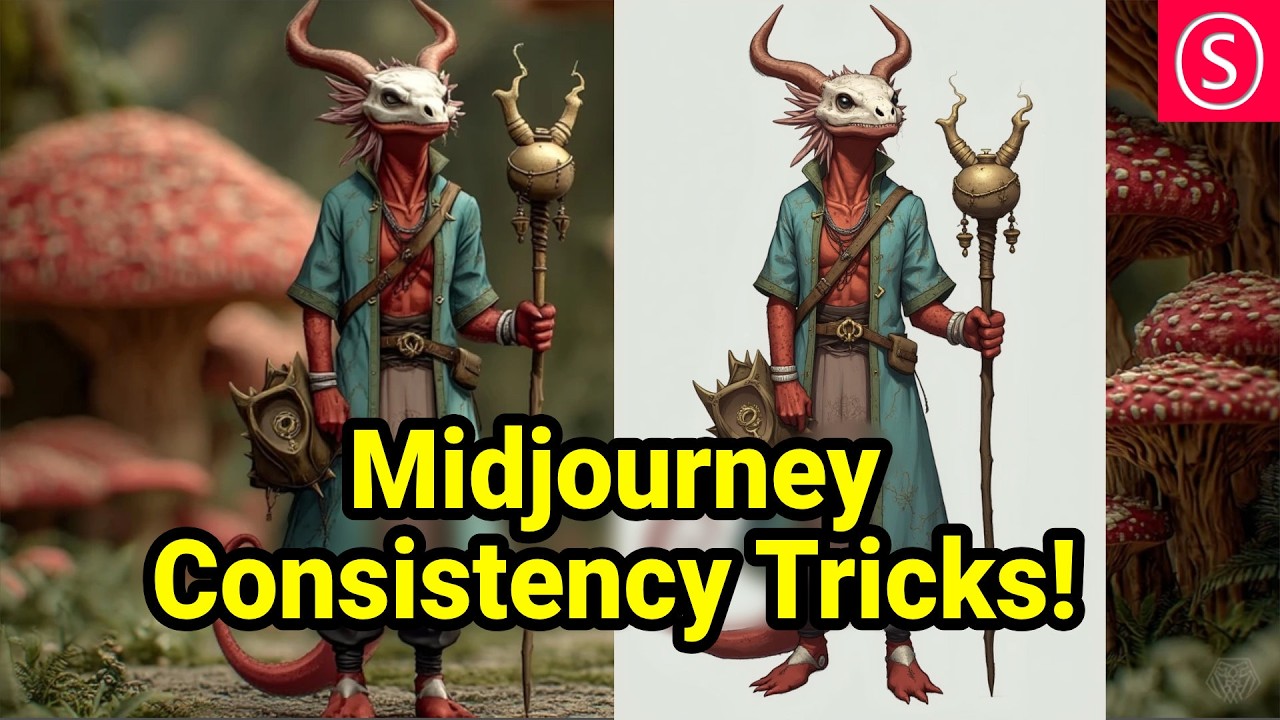The video provides practical tips for achieving perfect character consistency in Midjourney by using unique visual traits in prompts and leveraging Omni reference images to maintain coherent designs across different scenes and outfits. It also highlights complementary tools like Photoshop and AI enhancers to refine images, enabling creators to produce detailed, consistent characters suitable for storytelling and animation.
The video explores how to achieve perfect character consistency in Midjourney, a popular AI image generation tool, by sharing practical tips and tricks. The creator begins by showcasing a character design of a woman with distinctive features such as golden decorations, a leaf on her shoulder, and specific clothing elements like leather-bound shoes. By using these unique visual markers in prompts, the character remains recognizable across different scenes and animations, ensuring consistency. The key advice is to include unique traits like hair color, clothing details, and body shape in prompts to maintain a coherent look throughout various images.
A crucial technique demonstrated is the use of Omni reference images, where the original character design is dragged into the prompt interface to guide subsequent creations. This method helps Midjourney generate images that closely resemble the reference character, even when the character appears in different poses or outfits. The video also suggests creating multiple clothing variations for the same character using the original reference to maintain outfit consistency across scenes. Although Midjourney currently supports only one Omni reference image at a time, combining two characters into one image can work with some limitations, allowing for scenes with multiple characters.
The creator also addresses challenges such as environmental inconsistencies and composition issues, offering solutions like experimenting with different aspect ratios to improve image quality and character proportions. Additionally, Photoshop’s content-aware fill (Chen fill) is recommended for fixing minor errors or unwanted elements in generated images. The video touches on the pricing model of Adobe’s tools used for editing, noting that while some features are free, others can be costly, which might be a consideration for users relying heavily on these tools.
Further, the video highlights the potential of Midjourney for creating detailed character design sheets and 3D-style renders by combining AI tools like Korea and Flux. These tools enhance the detail and artistic quality of characters, allowing for more refined and varied designs. The creator demonstrates how Midjourney faithfully reproduces intricate details such as weapons, accessories, and clothing textures, which can then be animated beautifully. This capability opens up possibilities for indie filmmakers and artists to produce consistent and visually appealing characters for storytelling.
In conclusion, the video emphasizes the simplicity and power of using Midjourney for consistent character creation, encouraging viewers to experiment with unique prompts, Omni references, and complementary tools to achieve professional results. The creator suggests that with these techniques, users can develop short films or graphic novels featuring coherent characters across multiple scenes. The video ends with an invitation for viewers to share their thoughts, like, and share the content if they found it helpful, reinforcing the community aspect of creative AI use.
